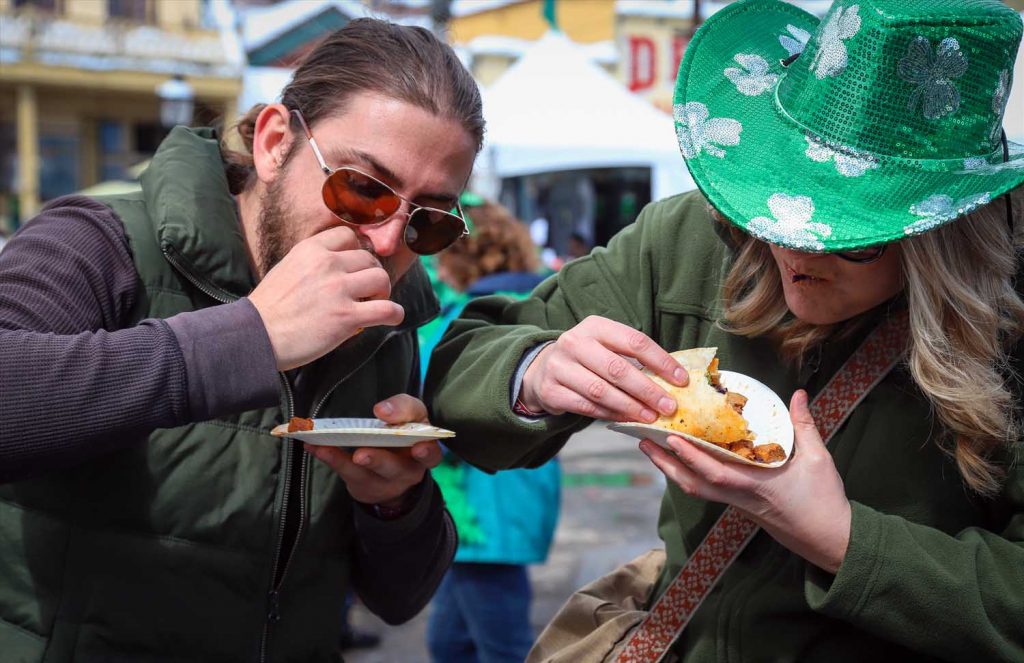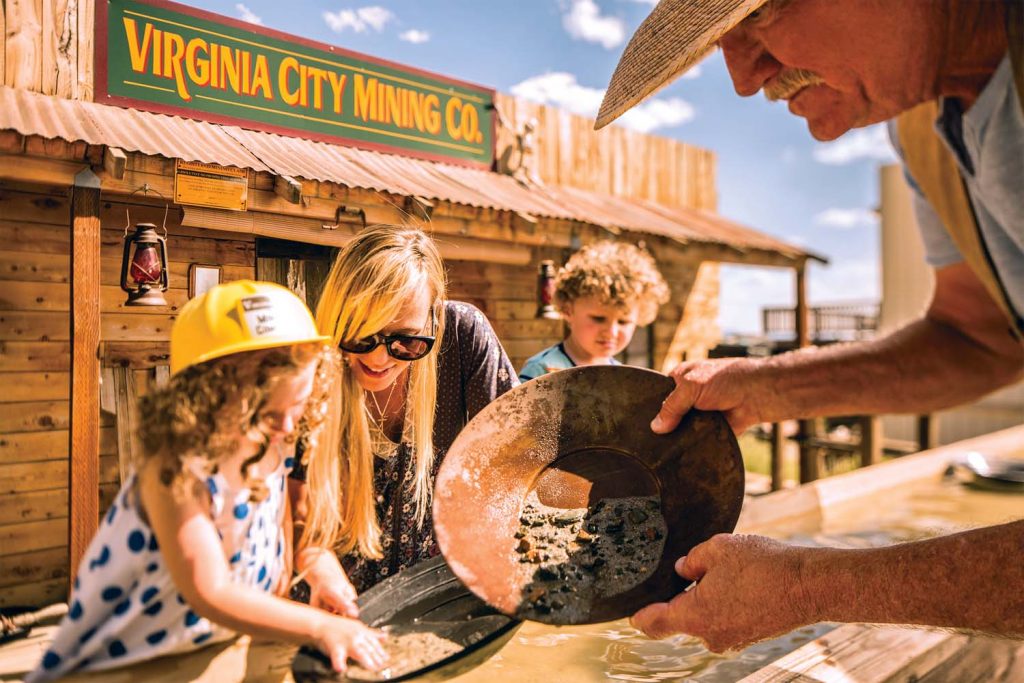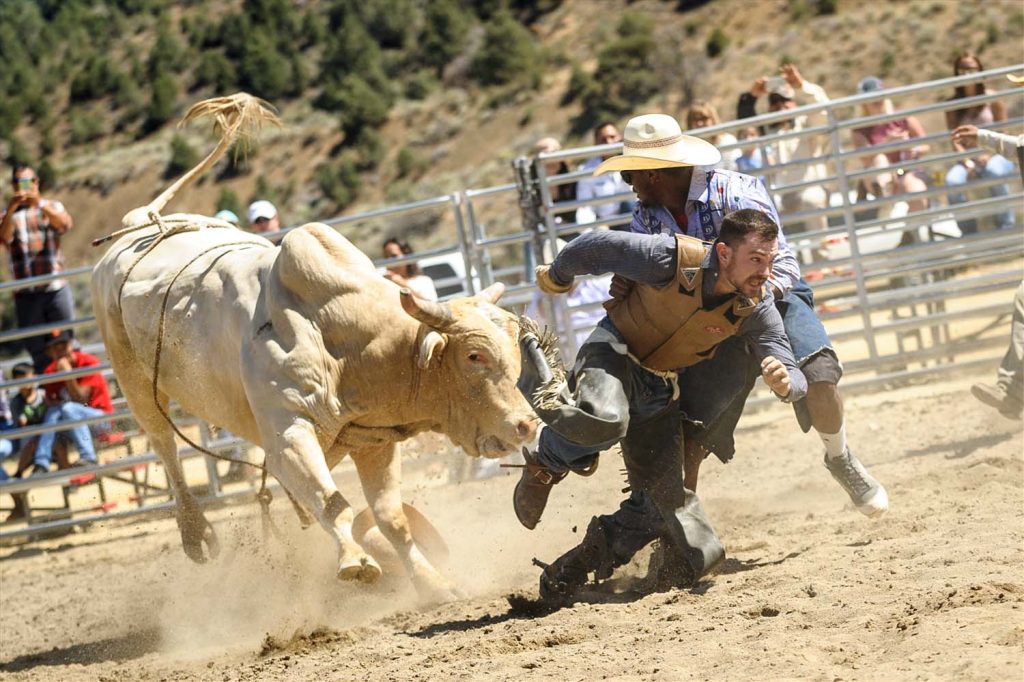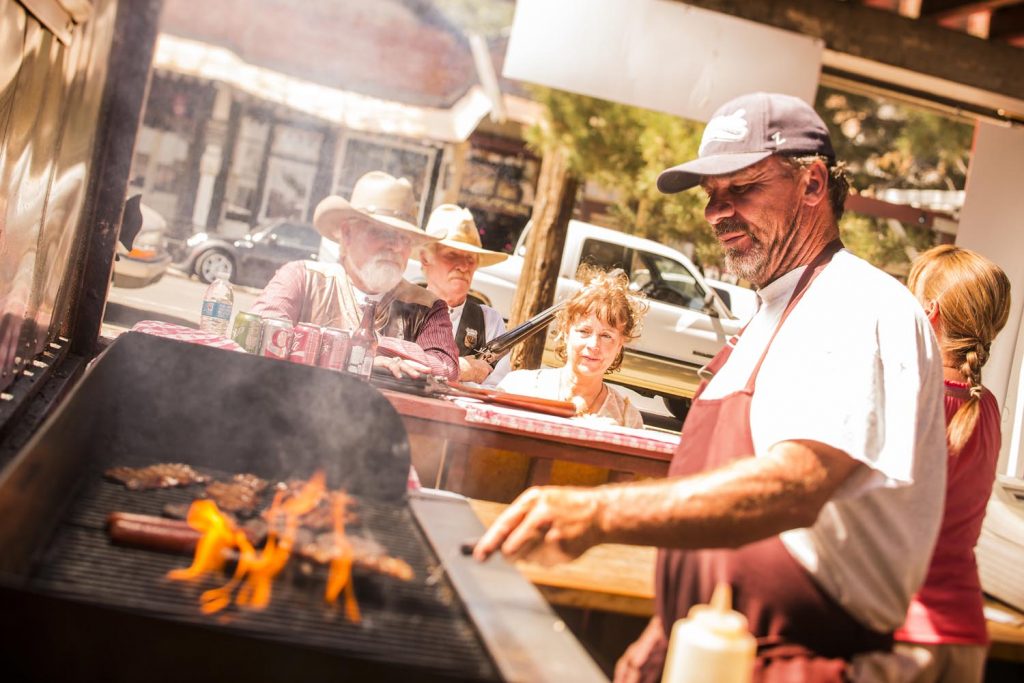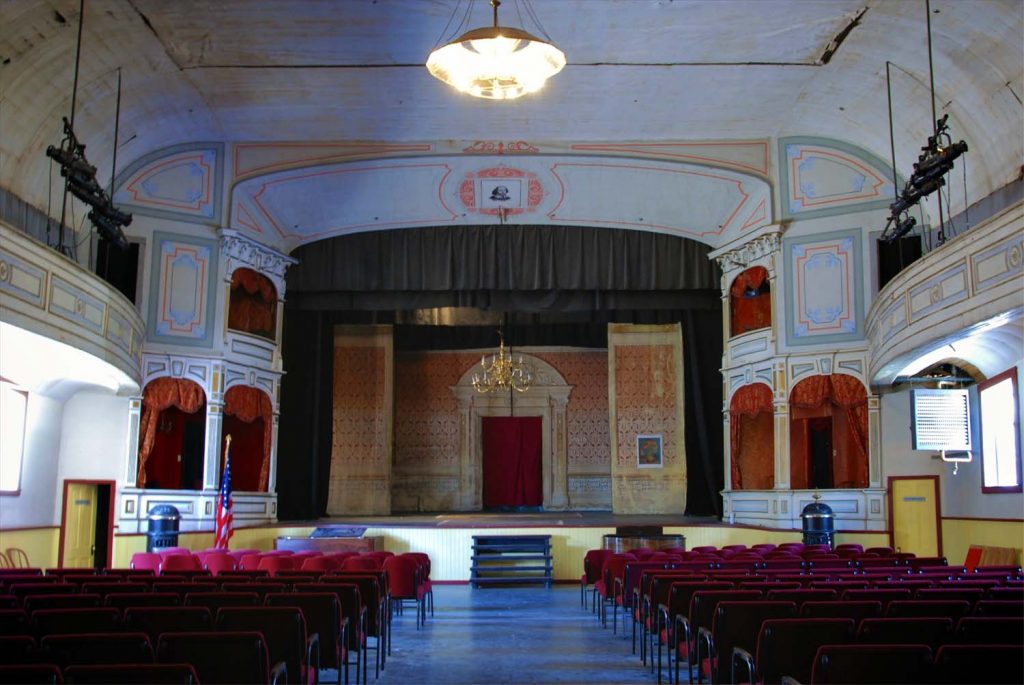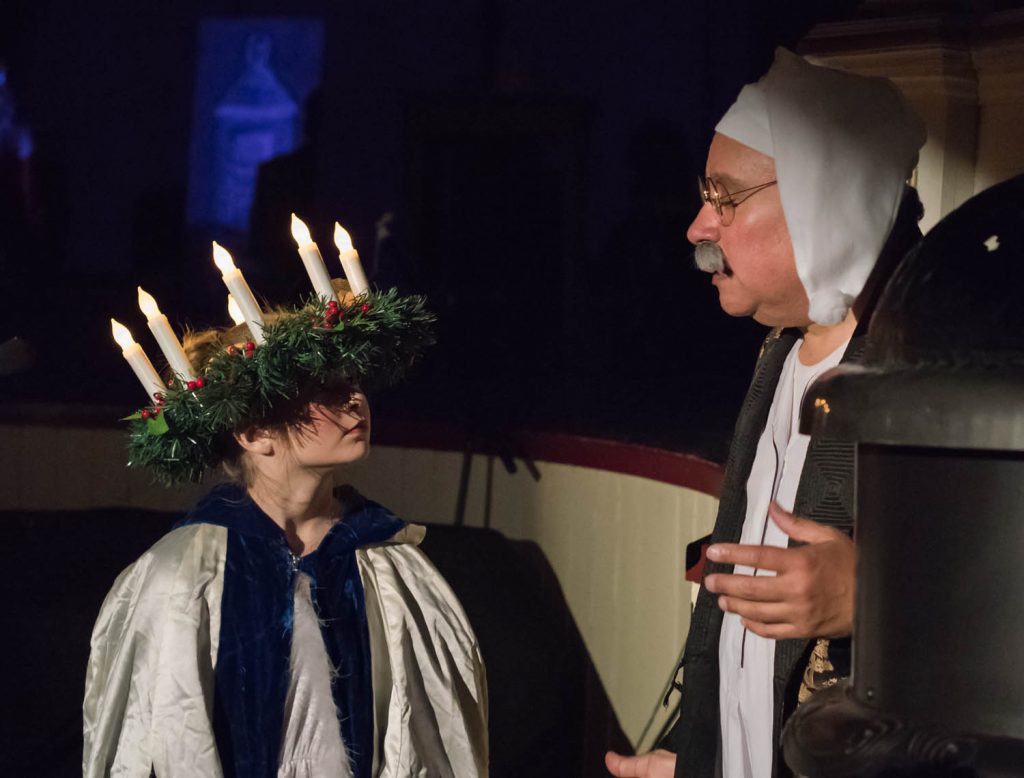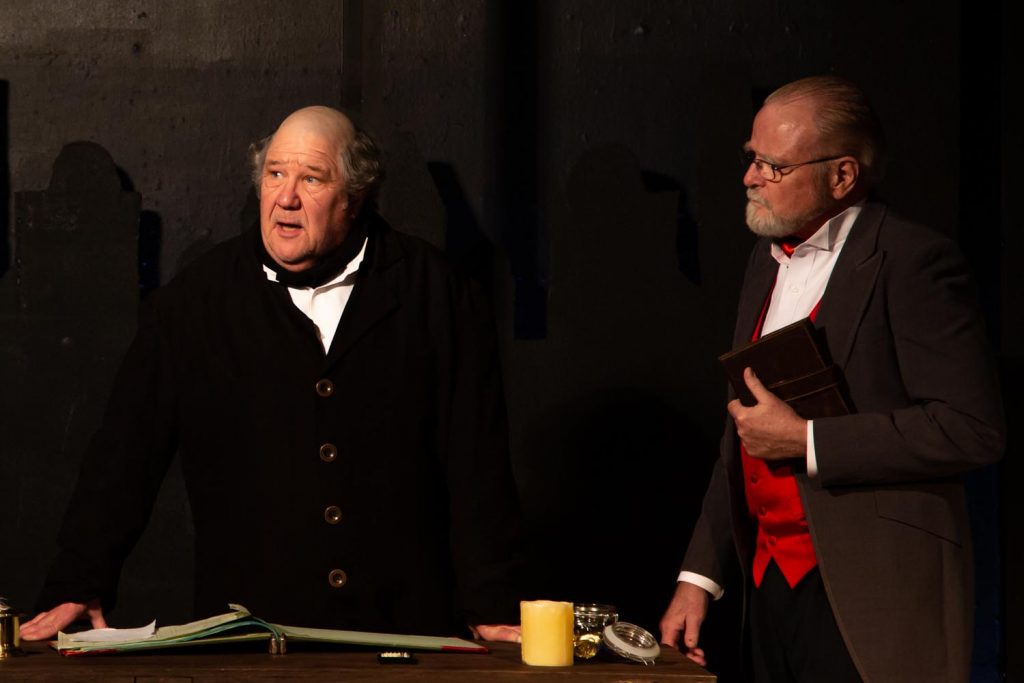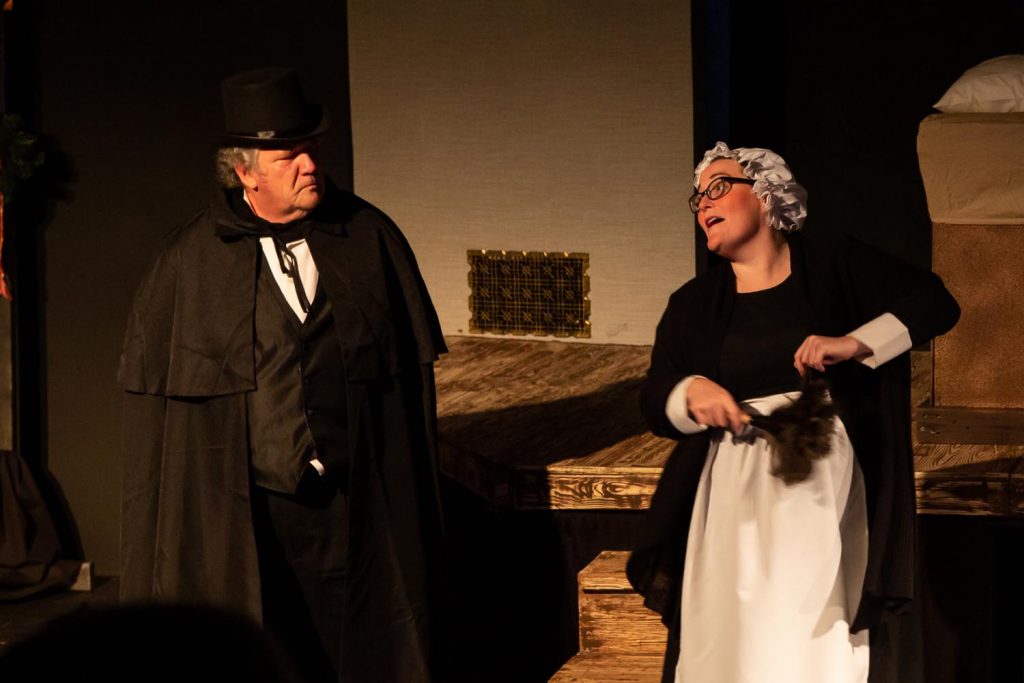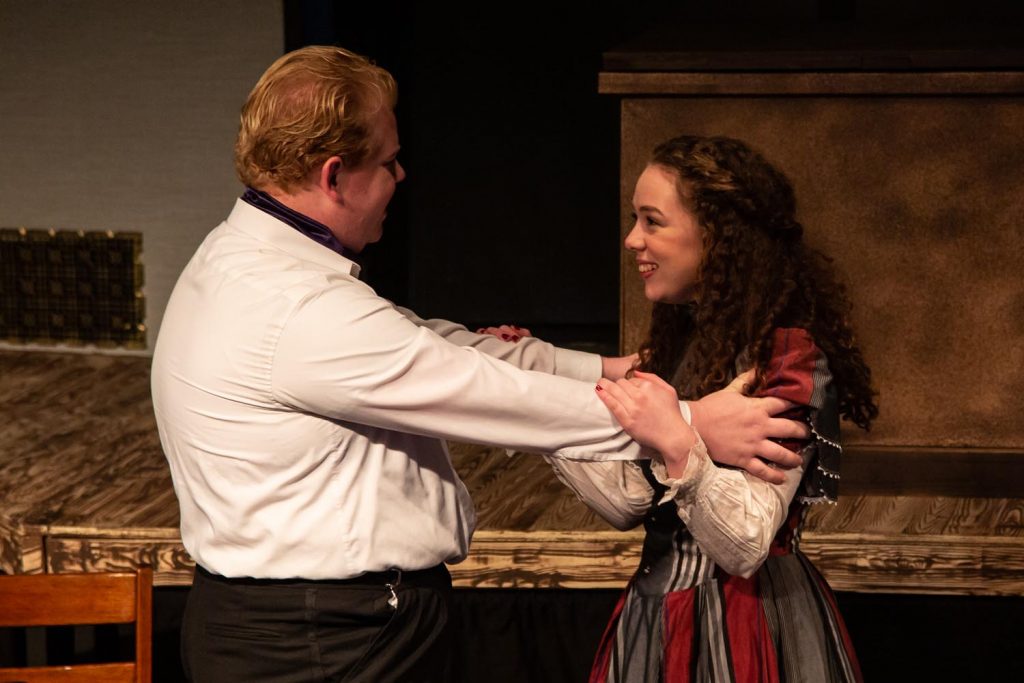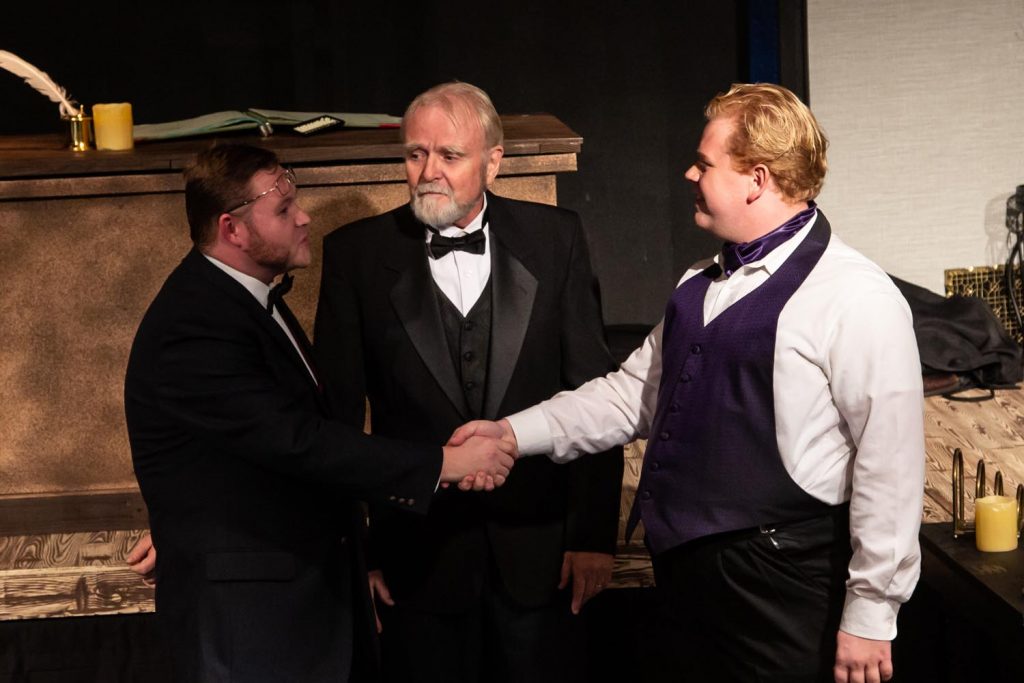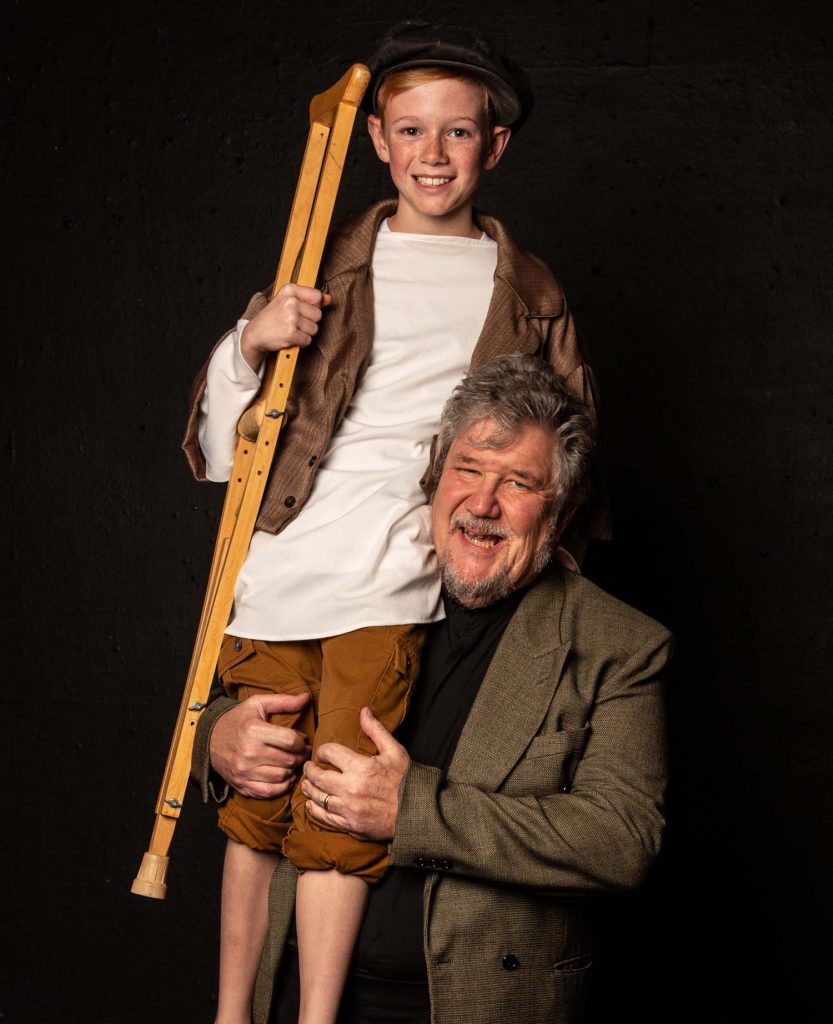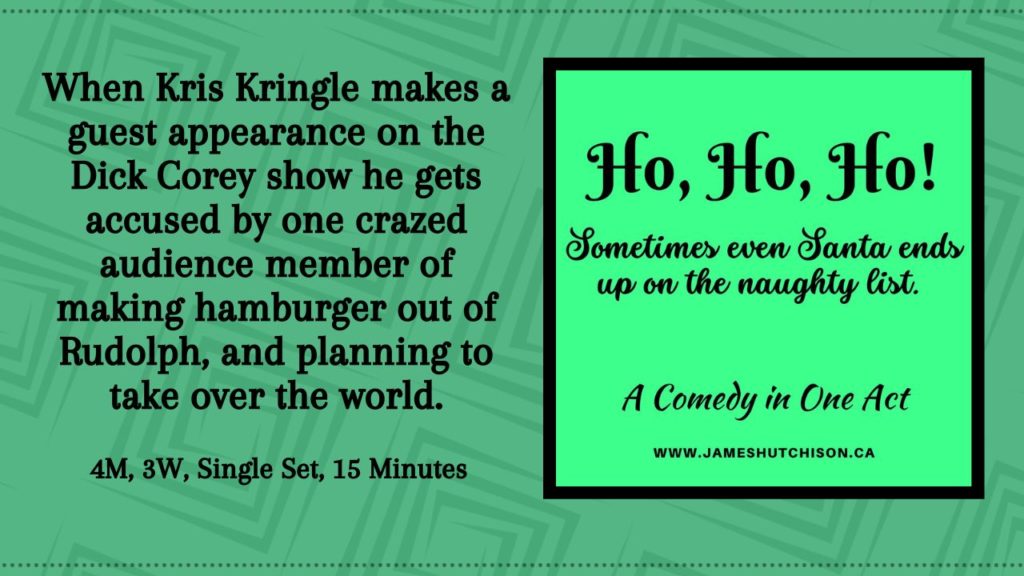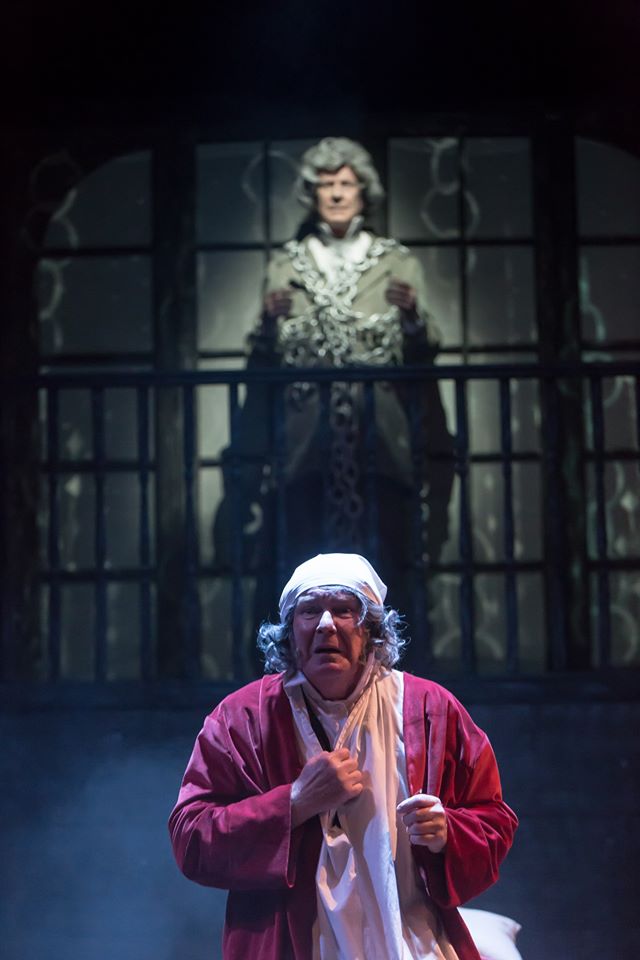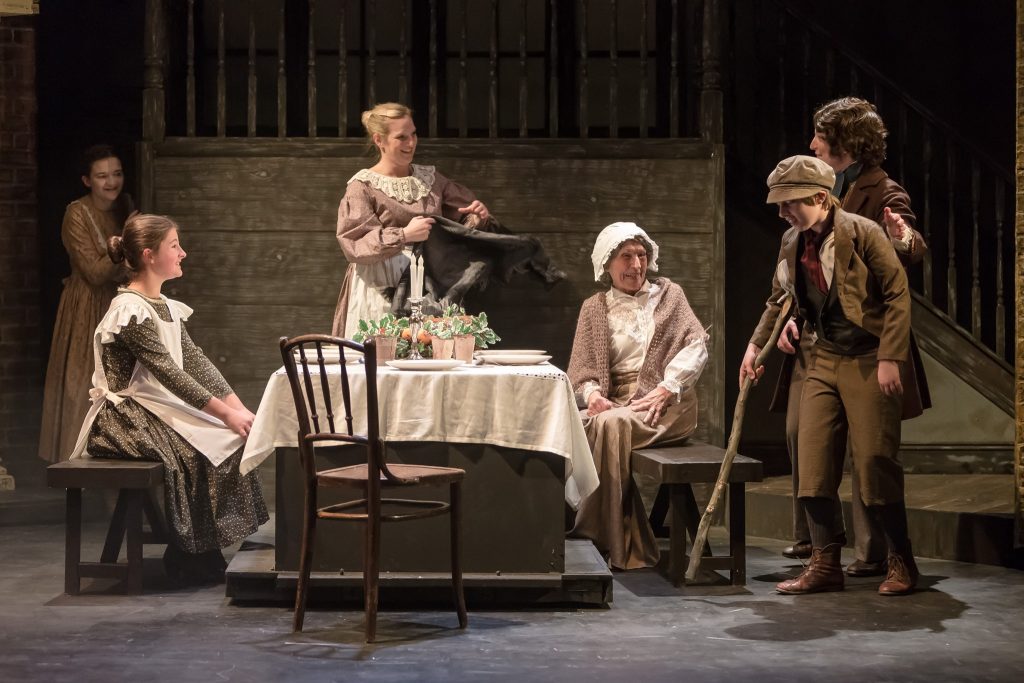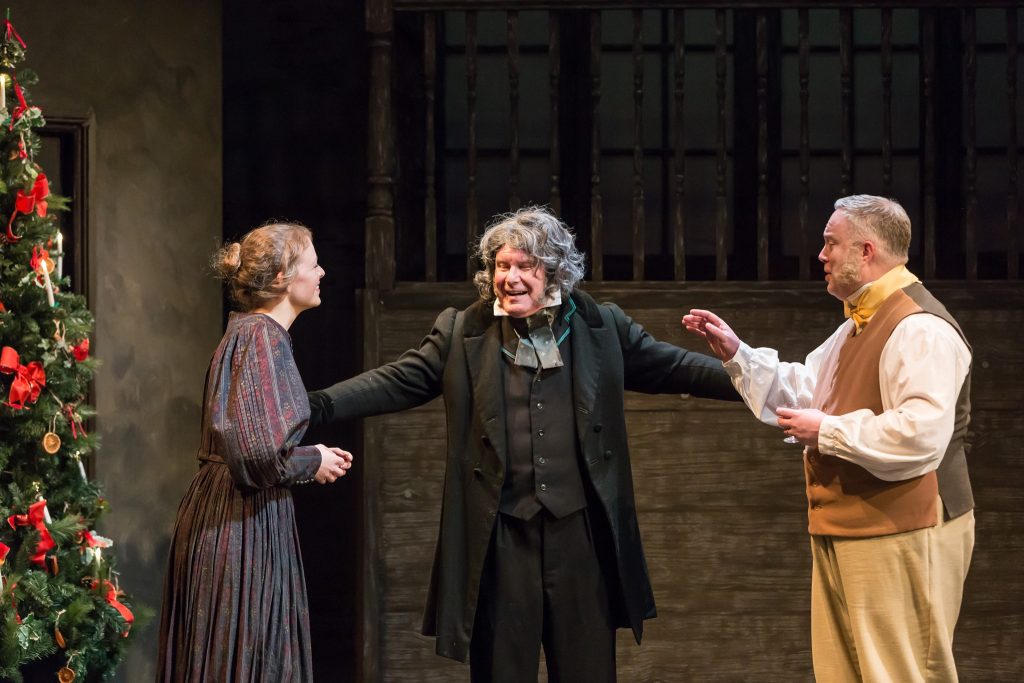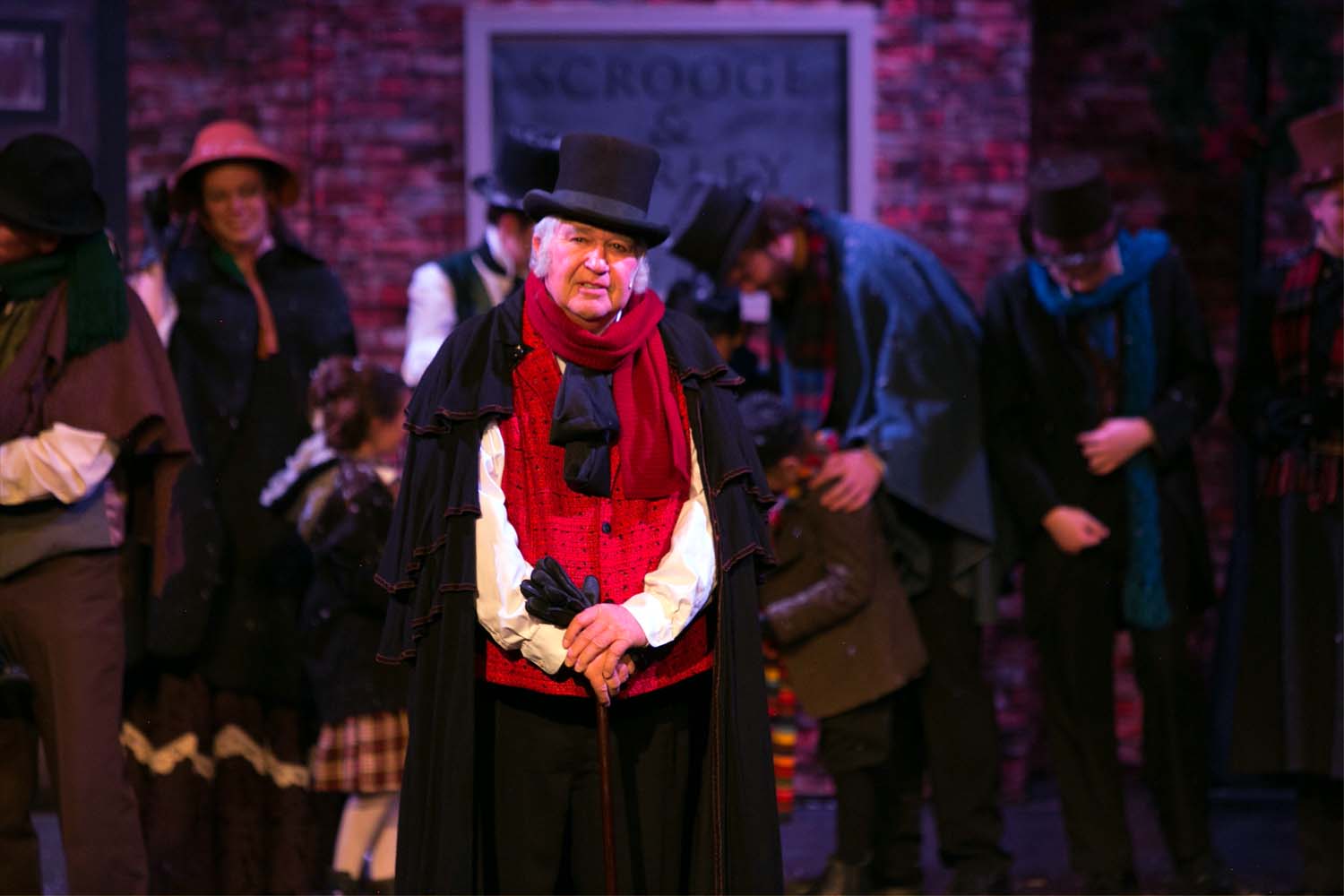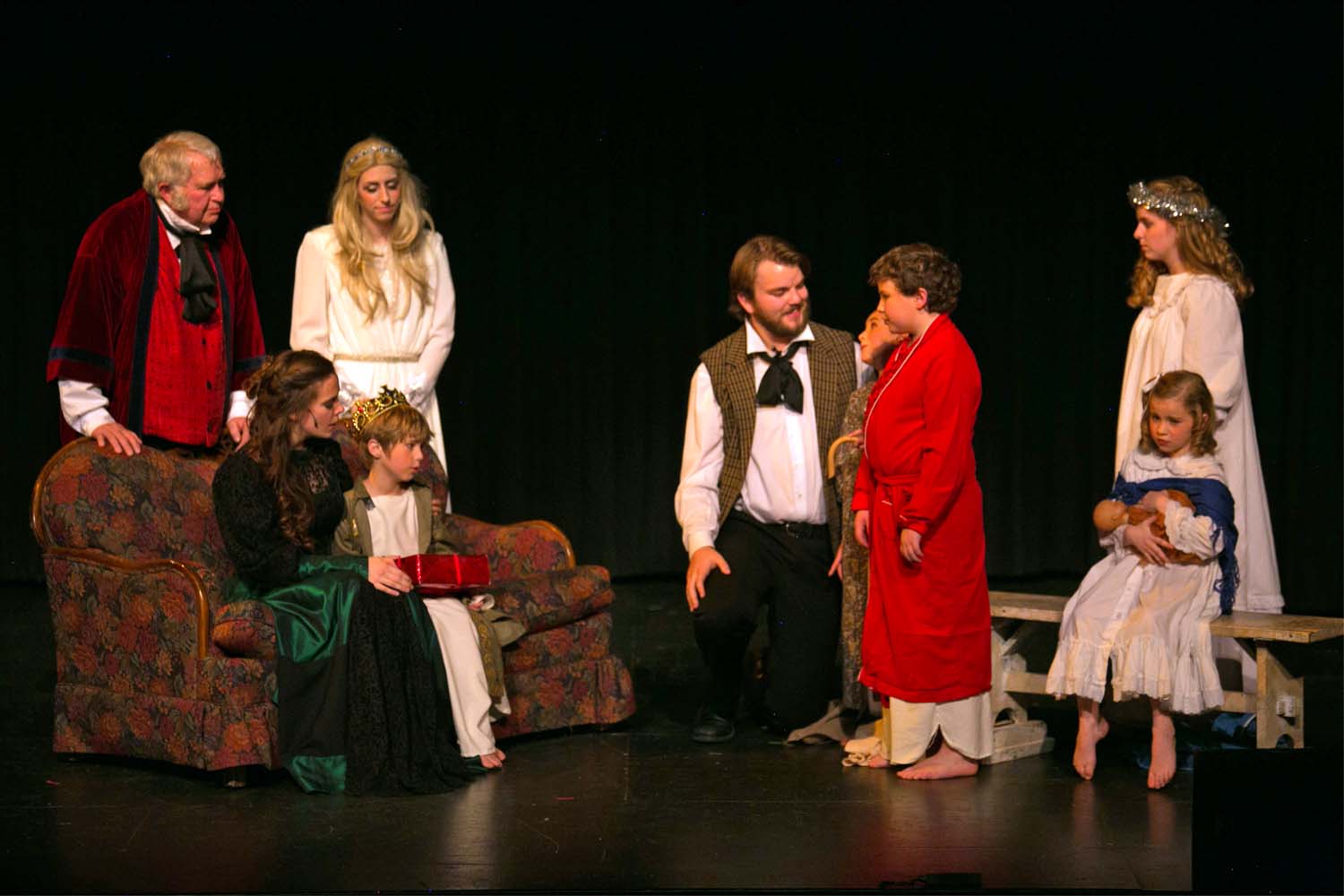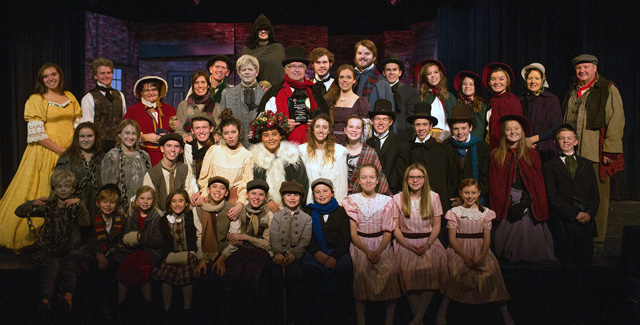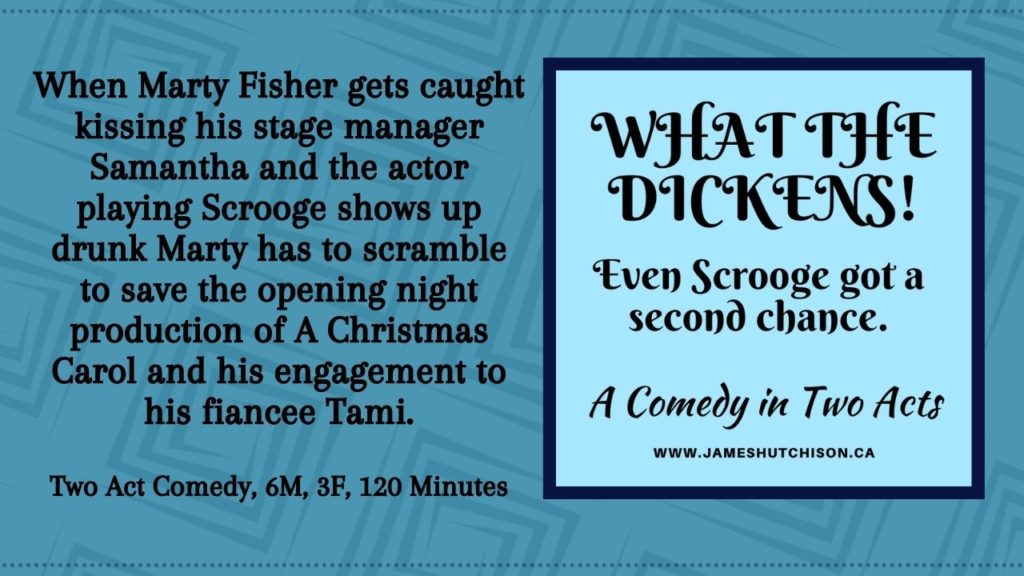
The spirit of Christmas is alive and well in Thunder Bay Ontario as the Cambrian Players present my adaptation of A Christmas Carol directed by Thomas McDonald and starring Gabe Ferrazzo as Ebenezer Scrooge. The production runs from November 29th to December 2nd and December 6th to 9th, with a special Matinee Performance and Tea on Sunday, December 3rd at 2 p.m. and a live-streamed performance on December 8th. There’s also a “pay what you may performance” on Thursday, November 30th. Tickets start at just $22.63 and are available online by following this link: The Cambrian Players present A Christmas Carol: Every man has the power to do good.
I contacted Thomas McDonald to talk with him about the Cambrian Players, his love of theatre, and this year’s production of A Christmas Carol.
JAMES HUTCHISON
So, who are the Cambrian Players and what’s their history? Tell me a little bit about the company and its vision and plans for the future.
THOMAS MCDONALD
Cambrian Players is Thunder Bay’s longest-running community theatre group and has been completely volunteer-run since 1949. It’s truly Theatre For the Love of It! Over the past seventy-plus years, Cambrian Players has presented over 200 mainstage plays, numerous Improv shows, and has recently added a Green Room semi-staged play reading series to its offerings. This season we’re producing on our mainstage, your version of A Christmas Carol ~ Every Man Has The Power To Do Good, as well as Charles Way’s adaptation of The Snow Queen, and Anthony Shaffer’s Sleuth.
Cambrian Players is an inclusive volunteer-led, non-profit community theatre organization fostering an appreciation of theatre by producing diverse amateur theatrical productions of the highest quality. We provide training in all aspects of theatrical production both on and offstage; recreational and volunteer opportunities; and affordable entertainment for our members and the community.
Cambrian Players strives to be accessible and a leader in community theatre. Cambrian Players purchased their first home in 2017, a historic building – formerly the Polish Hall on Spring Street. While the building is an incredible new home, it requires retrofitting to be accessible for all our wonderful patrons and volunteers. In advance of our 75th year, we are raising funds to renovate the theatre through a new capital campaign we call Spotlight On Inclusivity, which we hope will make our space physically accessible for all of our patrons.
JAMES
What is it you personally love about theatre? Why do it? What does it provide? What have been some of the magical moments for you as either a director or an actor or as an audience member?
THOMAS
I have been in love with theatre since I was a kid. The first professional show I ever saw was the touring company of Anne of Green Gables from Charlottetown – I know, how Canadian, eh? – and my heart was gone. The idea of escaping to a different world struck me, and I was hooked, and frankly, I still am. As my hubby will tell you, I do a lot of theatre with Cambrian, the College Performing Arts Club, Applauze Productions, and in the past the 10×10 Short Play Festival and during Covid-19 with Come Play With Me Digital Theatre and that love of theatre has never waned.
I work with a lot of amateur performers and people who are new to theatre both on and offstage and I love seeing them come alive and fall in love with the process and ultimately the product. There’s something about seeing their eyes light up and their confidence grow when they get a laugh, or meaningful silence or hear applause just for them the very first time. It provides a home and a chosen family for a lot of folks who, like me, were misfit kids.
As far as magical moments go, I love being surprised in the theatre, seeing a performance that is unexpected, or listening to an actor and realizing you are so caught up in their words that you’re holding your breath. Or feeling tears come to your eyes as you relate to what is happening, or it touches your spirit in a way that you weren’t expecting. However, I still hold on to seeing Anne of Green Gables that first time, and as they sang Ice Cream looking over and seeing my Grandma smile back at me, and knowing we were experiencing that joy together.

JAMES
This year you’re producing A Christmas Carol. So, why do you think we keep telling this story? The story of Scrooge. The story of the spirits? Why does it still resonate today?
THOMAS
The story turns 180 this year and still it speaks just as loudly. It’s a redemption story, and who doesn’t love a redemption story? The way you’ve given us Scrooge in this adaptation is very human. He is committed to the life he has chosen, in his mind for all the right reasons. He is “a good man of business”; but not in fact a “good man”. The chances the spirits give him – are to a point – like the choices we make every day. The ways we can do good, but are too busy, too self-involved, too single-minded to see them as what they are – opportunities to better the world we live in. Our Scrooge, Gabe Ferrazzo, says that of all the roles he’s played – Prospero, Shylock, Julius Caesar and more – no role has affected him more personally than Scrooge. A man reflecting on the years behind him, knowing there are fewer years ahead.
Not only the way you have written Scrooge but also the way you’ve written Marley and Scrooge together has given us Marley with more to be redeemed from. The way he isolates Scrooge from all he loves and rewards him for following in his footsteps. The father figures in this version of the story speak to people, Scrooge’s clear struggle with his own father, then being mentored by Fezziwig, then having his head turned by Marley, and then ultimately Scrooge’s relationship with his nephew Fred, and Scrooge’s desire to toughen him for the world are poignant. It’s universal. It’s human. It’s a story for all of us.
JAMES
Every theatre company brings their own vision to telling the story. Tell me a little bit about the vision for this year’s production and the cast you’ve assembled to bring the story to the stage and what magical elements can people look forward to experiencing when they come to see the show.
THOMAS
We are so very blessed to have assembled this talented multi-generational cast. Twenty-five actors play thirty-nine roles – which is a lot for our very small theatre! – ranging in age from 11 to 70+, and ranging in experience have come together to bring your story to life and also provide mentoring and learning opportunities which Cambrian Players sees as the heart of what we do. With so large a cast, we have had to be creative and use all the available space making it a semi-immersive production. We have turned our stage into a world frozen in time, anchored by a huge clock face and a flurry of letters and ledger pages frozen in time.
The idea of Scrooge as a stuck clock came into our minds as we plotted the show and began considering the way Scrooge moves through his world, in straight lines focused on his goals, and it’s not until the spirits intervene that we get circular movement as the clock – or Scrooge’s heart – begins ticking again. We have approached the spirits in an interesting way, but you’ll have to come and see the show or tune in for our virtual production to see it for yourself. There is a real humanity to the show which has been the core of our approach, with period-appropriate costumes, nuanced performances and finding the humour and pathos in the play, we hope to do your play justice and make it something magical for everyone.
Prior to each performance a musical community member will be busking in support of our Spotlight on Inclusivity Campaign and our matinee tea will support the same. We will be doing a relaxed performance in partnership with our friends from Autism Ontario, to present the show in a way that will be safe and welcoming for their members to attend and experience the magic of A Christmas Carol first hand!
JAMES
So, Tom, every year the King gives his Christmas message, and the Prime Minister gives his, the Pope chimes in as well. Politicians, artists, and religious leaders all have their own Christmas messages. What is your Christmas message to your friends and family and the world this holiday season?
THOMAS
I hope that you all find light, love, and strength this holiday season. I hope that you are with those who love you, whether blood or chosen family. I hope that you have an outlet for creativity in your life. I hope that you feel community, and can give back to it. I hope that your heart is light, and you can make peace with that with which you struggle. I hope that you are safe and sheltered, warm and full, cared for and have those to care for. Merry Christmas from Thunder Bay, and from Cambrian Players!
***
A Christmas Carol directed by Thomas McDonald and starring Gabe Ferrazzo as Ebenezer Scrooge runs from November 29th to December 2nd and December 6th to 9th, with a special Matinee Performance and Tea on Sunday, December 3rd at 2pm and a live-streamed performance on December 8th. There’s also a “pay what you may performance” on Thursday, November 30th. Tickets start at just $22.63 and are available online by following this link: The Cambrian Players present A Christmas Carol: Every man has the power to do good.
Cambrian Players Present ‘A Christmas Carol – Every Man has the Power to do Good’
By Charles Dickens Adapted for the stage by James Hutchison
Directed by Thomas McDonald.
Our cast features 25 talented local performers both new and familiar to our audiences: Gabe Ferrazzo as Ebenezer Scrooge with Adam Wayne Lyew-Sang, Alex Jecchinis, Andrea Jacobsen, Ariana McLean, Ben Albert, Caden Lear, Chris Jason, Emily Upper, Janis Swanson, Jarin Brown, Jerry Silen, Joelle Krupa, Joshua Mulzer, Joy Haessler, Kenzie Dillon, Matthew Henry, Matthew Jollineau, Pauline Krupa, Penelope Upper-Smith, Richard Pepper, Ruth Currie, Shawna Marshall, Taylor Onski, Wyatt Krupa










